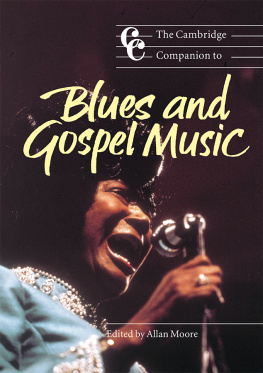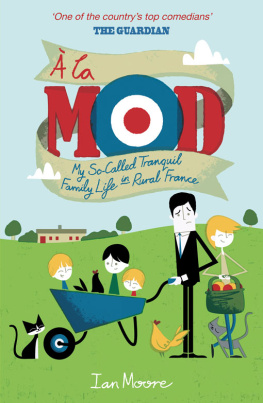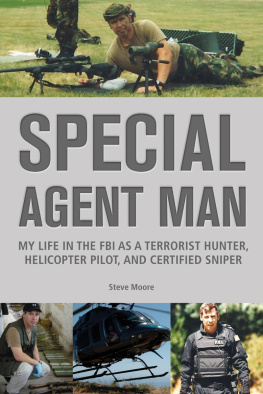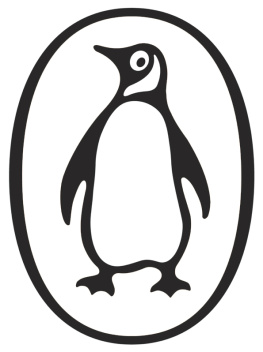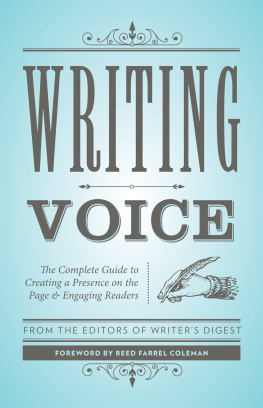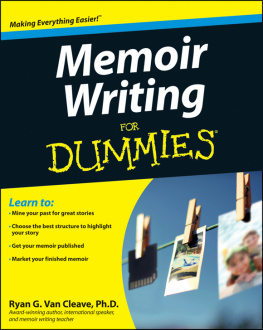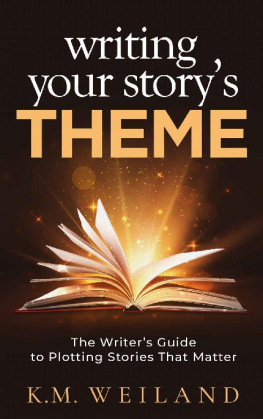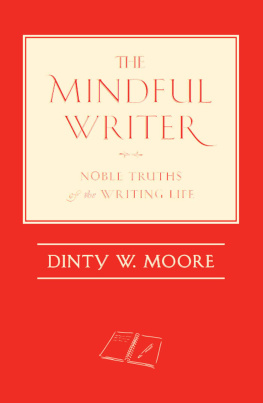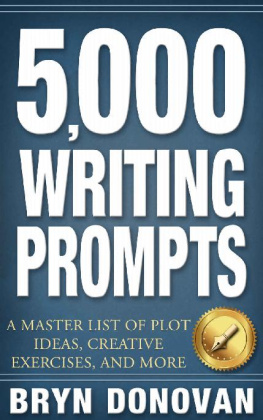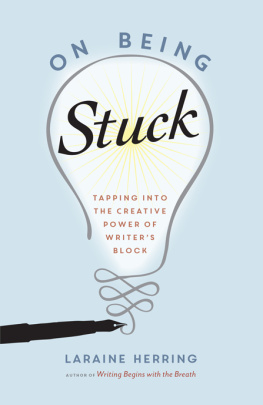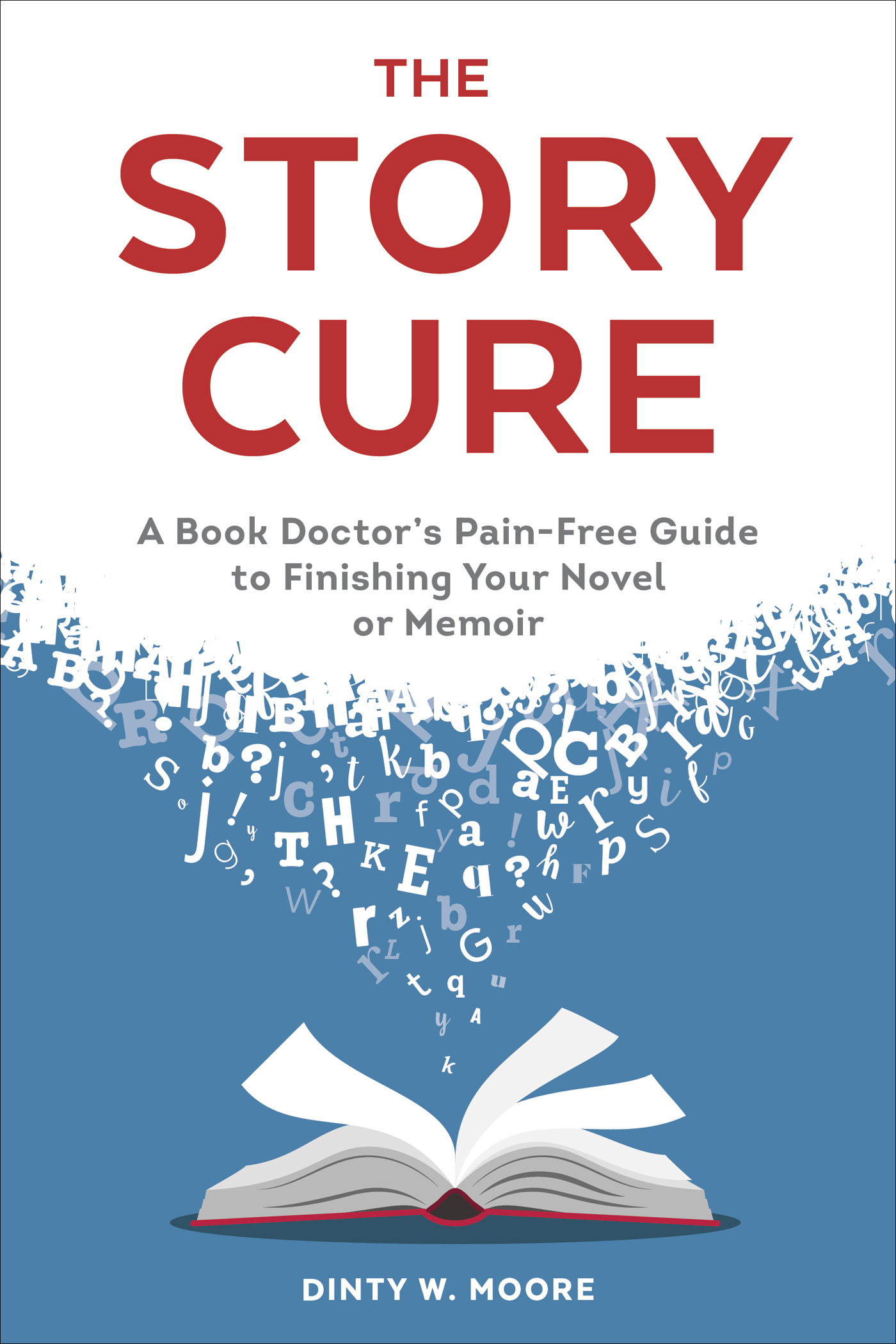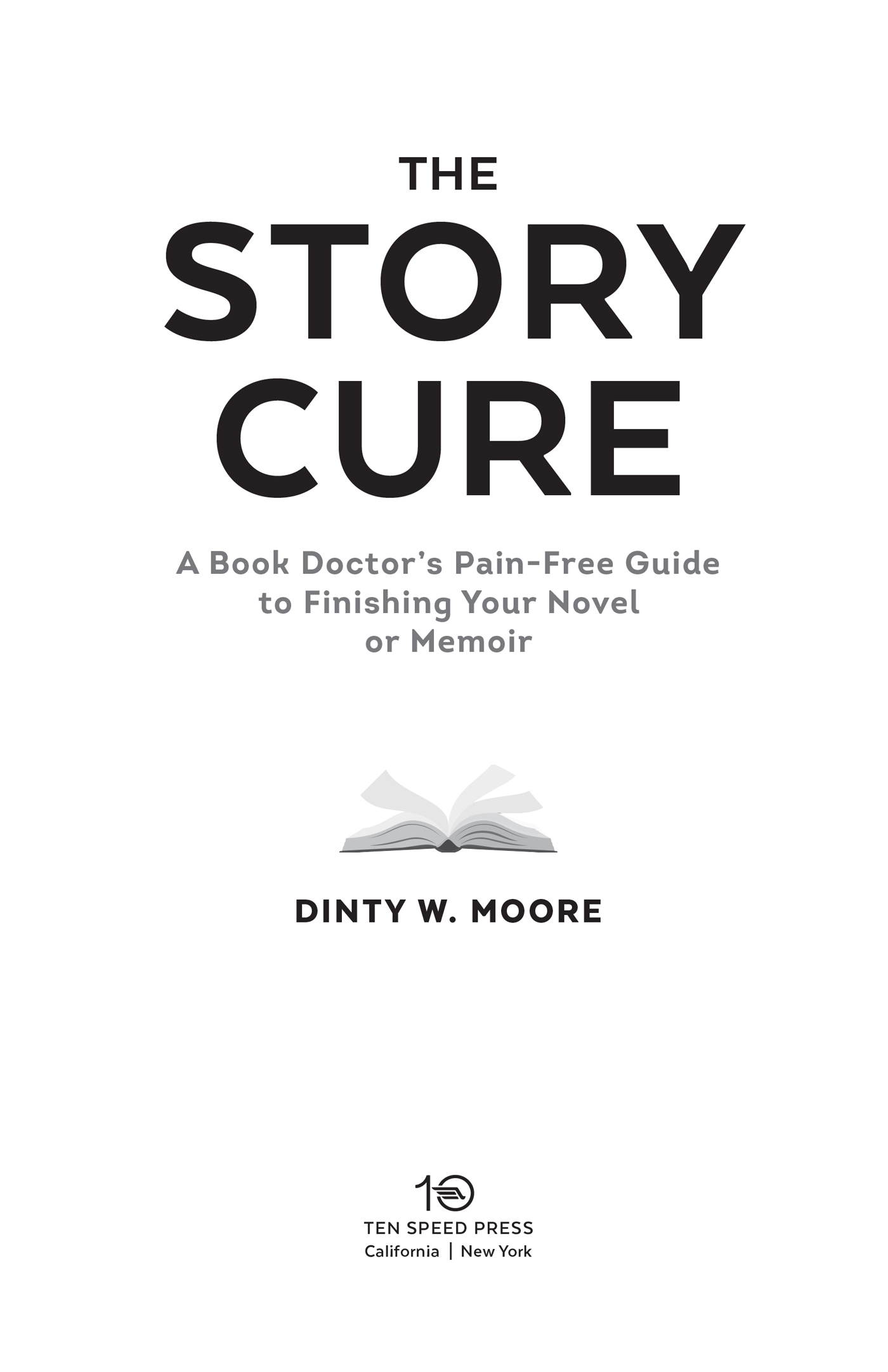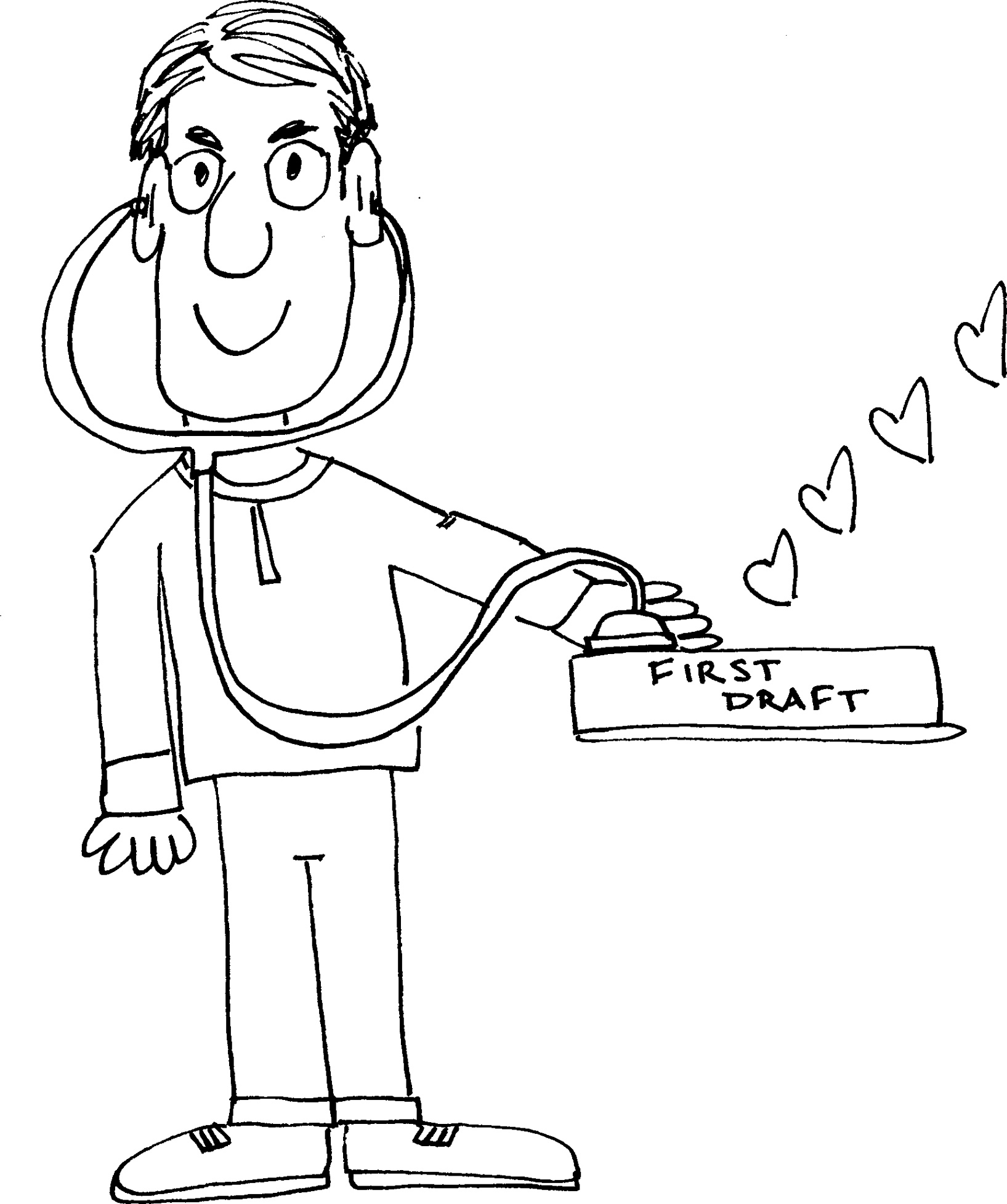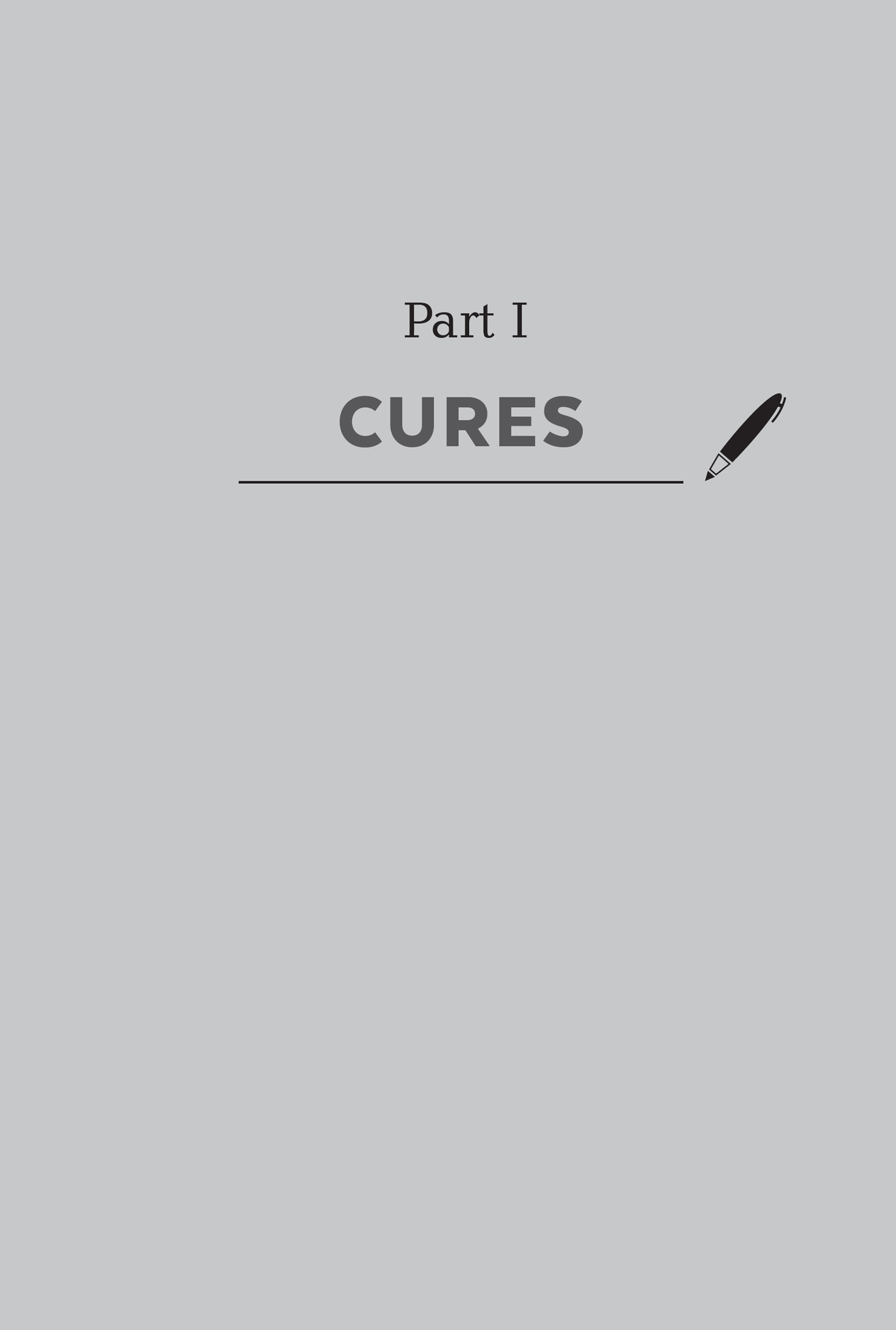Copyright 2017 by Dinty W. Moore
All rights reserved.
Published in the United States by Ten Speed Press, an imprint of the Crown Publishing Group, a division of Penguin Random House LLC, New York.
Ten Speed Press and the Ten Speed Press colophon are registered trademarks of Penguin Random House LLC.
Names: Moore, Dinty W., 1955- author.
Title: The story cure : a book doctors pain-free guide to finishing your novel or memoir / Dinty W. Moore.
Description: Berkeley : Ten Speed Press, 2017. | Includes bibliographical references and index.
Subjects: LCSH: FictionAuthorship. | FictionTechnique. | AutobiographyAuthorship. | Creative writing. |
BISAC: LANGUAGE ARTS & DISCIPLINES / Composition & Creative Writing. | LANGUAGE ARTS & DISCIPLINES / Grammar & Punctuation. | LANGUAGE ARTS & DISCIPLINES / Reference.
Classification: LCC PN3355 .M66 2017 (print) | LCC PN3355 (e-book) | DDC 808.3dc23
Introduction
NOTES FROM A BOOK DOCTOR
It has been my good fortune these past thirty years to not only be a writer, but to also teach writing, to students of all ages and all backgrounds, in a variety of settings. Some students come to me eager to complete their first short story or essay, while others arrive having already started on a first book.
People often say that everybody has a book in them. I cant tell you whether that is true or notI havent met everybody. But I can tell you that the folks Im privileged to work with do have a book in them, and most are willing to work hard to get that book out into the world.
My job is to help them. And I very much enjoy doing it.
Before exploring the Story Cure and how it can lead a writer from start to finish in creating a successful book, let me say a few words about what is meant by the term Book Doctor.
A common enough term in the writing world, Book Doctor is used to describe a person who will take a book manuscriptperhaps an early draft of a novel or memoir, perhaps draft sixteenand diagnose why it is not yet working.
Not yet working might mean the author herself is dissatisfied, sensing that the overall arc of the book isnt falling gracefully into place or the main character is not coming to life on the page. Alternatively, not yet working might mean the author has sent a finished draft out to dozens of literary agents or editors, a draft she thought was healthy and ready to go, but has received only polite but impersonal No thank you notes, and is now discouraged and wondering What do they see wrong with my book that I dont see?
A Book Doctor is different from a copyeditor or proofreader. The task at hand is not to clean up sentences, adjust punctuation, or fix typographical errors. A Book Doctor looks at the patient as a wholethe plot, the main characters, the voice, the structureor, to continue the physician metaphor, the arms, the legs, the belly, and the heart. The Doctors job is to diagnose exactly why the patient isnt thriving.
If youve been to a doctor, you can guess what comes next: doctors are full of advice, and they invariably send you out the door with a prescription or two. Sometimes the treatment is simple and quick; other times it can be radical: a transfusion, a transplant, or even an amputation.
A Book Doctor can also sometimes act the part of psychiatrist, helping authors tackle various self-inflicted problems.
Though writing should be a stimulating, rewarding endeavor, for too many it can lead to self-doubt and, worse yet, self-loathing. Writing well is difficult enoughdrafting twenty or two hundred pages takes devotion, attention, and a healthy dose of stubbornnessbut it becomes excruciatingly tough when we let rampaging anxiety poison the experience.
This Book Doctor, however, believes that whatever is ailing a novel or memoir in progress is not about the writer, it is about the story: how well we understand it, how well we tell it, and how well we enable it to come alive in the readers mind. Thats the heart of the Story Cure.
And what is meant by the word pain-free in this books subtitle?
Well, writing is painstaking, meaning the writer must take great care and pay close attention to every detail, every word. But it should not be painful. And if it is painful, it probably hurts most because the author is letting the negative voices of doubt overrun the exhilaration of creativity and discovery.
Well address that as well.
This book is designed for writers at the beginning of their novel or memoir project, those somewhere in the middle, as well as those who have completed multiple drafts. The goal is to get you to the finish line, to make sure you complete your book and have something in your hands that you can feel proud of.
Even if you are well along in your project, through a first or second draft, I recommend beginning at the beginning of this guide. Understanding how the heart story can strengthen all aspects of your novel or memoir will be helpful throughout each stage of drafting and revision.
But no one ever reached the finish while sitting at the starting line trying on sneakers.
So lets get started.
We tell ourselves stories in order to live.
1 | THE STORY CURE
DIAGNOSING PROBLEMS OF THE HEART
A key piece of the Story Cure is the understanding that what you should be focusing on in your novel or memoir is storytelling, pure and simple. The most direct way to make your book one that readers want to read (and, in that way, one that editors want to publish) is to tell a damn good story.
Too often, we lose track of that.
Too often I meet writers halfway into a book project who no longer feel confident in the story they want to tell, or more importantly, no longer feel entirely sure why someone should want to hear it.
I know from experience that it is all too easy to lose track. Perhaps losing track is an integral part of the process. But knowing what track you are on, and getting back onto that track when the process veers off, is a critical skill for any writer.
What Is Story?
Remember this: stories that keep readers fully engaged and eager to follow along through each moment and every surprising turn did not begin with Charles Dickens, Stephen King, or J. K. Rowling. Captivating storytelling goes back to the origins of language itself, to humankinds earliest days.


